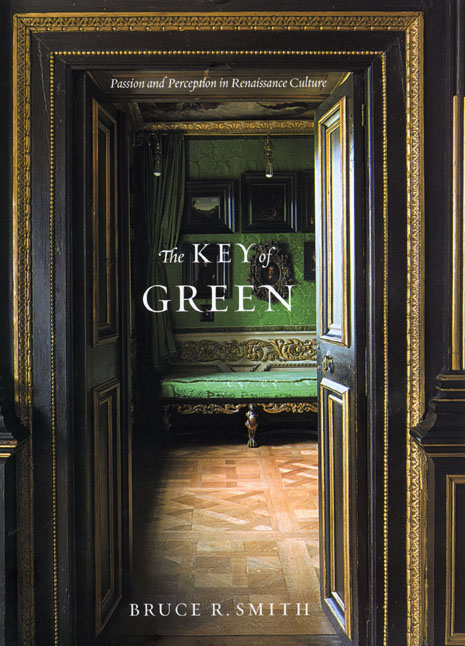The Wearing of the Green

Today is St. Patrick’s Day; what color are you wearing? This weekend, the Chicago River, in an annual tradition, was dyed a brilliant green hue (ironically, the dye itself is orange, another color long associated with Ireland) and, in a nod to the new occupants’ home town, today the White House fountains were tinted in honor of St. Pat. The Chicago Tribune offers a fascinating top ten list of things you might not know about the color green (Including the fact that women’s faces are more green than men’s. Who knew?), but if you really want to see the world through, pardon the pun, green-tinted glasses, we recommend Bruce R. Smith’s The Key of Green.
It turns out we’ve been crazy about the color for hundreds of years (and not just on St. Patrick’s Day). During the sixteenth and seventeenth centuries, the color green was curiously prominent and resonant in English culture: it was the most common color of household goods, the recommended wall color against which to view paintings, the hue that was supposed to appear in alchemical processes at the moment base metal turned to gold, and the color most frequently associated with human passions of all sorts. Smith studies this curiosity, considering the significance of the color in the literature, visual arts and popular culture of early modern England. Contending that color is a matter of both sensation and emotion, he examines Renaissance culture through the lens of sense perception and aesthetic pleasure, while offering thoughts on the nature of consciousness, perception, and emotion.
So when you’re drinking the green beer this evening, don’t forget to make a toast to this fascinating color. Sláinte!